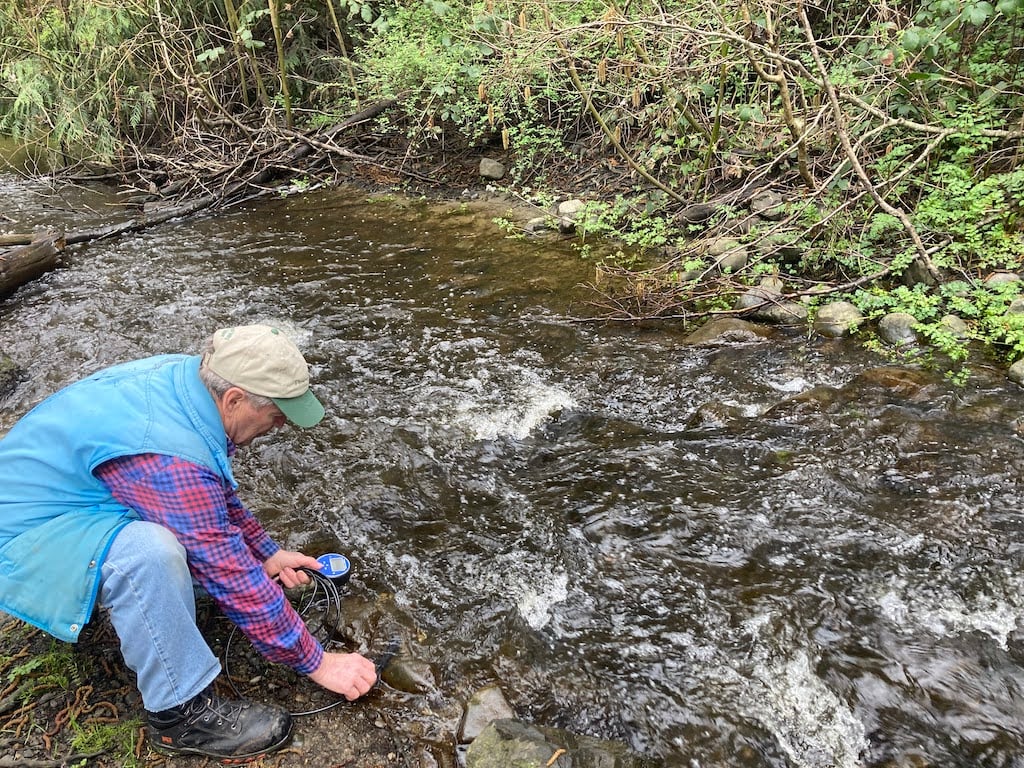Spotlight: Friends of Swan Creek Watershed
Over the last month, our B.C. Water Quality Coordinator, Roxanne, has been working closely with John from Friends of Swan Creek Watershed. As part of this, Roxanne has had the privilege of going testing with John. While out testing, the ever so knowledgeable John informed Roxanne of the history and restoration work that the group has done along Swan Creek with major support from Peninsula Streams & Shoreline Society. Namely, all of the riffles that have been added over the years.

What’s a riffle?
In a nutshell, a riffle is a shallow part of a river where the water flows quickly past rocks. We’ve all probably seen a riffle before, but might not have known the actual name for it! As John told Roxanne, the riffles in Swan Creek are extremely important; they provide a chance for the creek water to oxygenate as well as providing coveted habitat for Coho and Cutthroat Trout. The riffles are just one of the many places where John and others from Swan Creek do their water quality monitoring. It’s critically important to make sure these areas are staying healthy, after all.

It’s not just the riffles, though. John has been monitoring the water quality in Swan Creek for years! A true steward of the environment, John records readings for dissolved oxygen, water temperature, total dissolved solids, and pH. All of these parameters are great indicators of stream health. The healthier the stream, the more likely the salmon are to return to the stream.

Swan Creek is on Water Rangers’ data platform!
We are proud to say that the Water Rangers data platform is now home to many years of historical data from Swan Creek. Now everyone can see all of this group’s incredible stewardship and the crucial data they collect.
Thank you to John and Friends of Swan Creek Watershed for all the hard work you do!
Lean more!
You can learn more about Friends of Swan Creek Watershed (and the data they’re collecting) here.